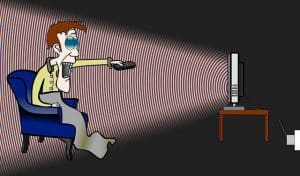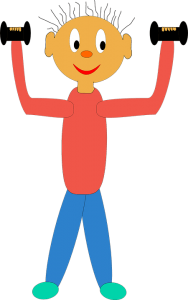Sometimes a CV is defined as a very detailed, comprehensive resume, but for the purpose of this article, I’m talking about a standard job application. We all know CVs and cover letters are two very different things. We may not know, however, what material should be included in one and not the other. This article will break things down in a very simple way. After reading this advice, you will never make the mistake of rambling on about valuable character traits in your CV or bullet-pointing your education in your cover letter. Tailoring for each new job application will also be a much more efficient process once you have a comprehensive list of ‘what-goes-where’ to refer to. To keep it simple, we’ll begin with what information should appear in a cover letter:
Note: A cover letter should be less than one page, always. Always.
What to include in cover letter:
1. Brief information about the person (you, the applicant). This doesn’t mean you tell the prospective employer that you have two sisters and were brought up on a farm. Keep the information relevant to the job. So when I say personal, I mean ‘information about you’, not what your favourite colour of underwear is.
2. Work experience: Now, this is not written or presented in the same way as it will be in your CV. Only work experience that is somehow relevant to the position you’re applying for should appear in the cover letter. Don’t talk about every single job you’ve ever had just to show how hard-working you are. You should only mention two or three examples, and each example should be developed to include how this makes you ideal for what you’re applying for.
3. Job profile/career goals: Now this bit you can’t really make up because your employment history usually does point towards a field or career you tend to go for. This one will be difficult to discuss if you’re applying for a job that isn’t your ideal career. The best way to tackle this awkward scenario is to say how you would like a change in career, I suppose, but even this would raise doubts in the mind of the employer about your commitment level and decisiveness. My top advice here is to only apply for jobs that your career/education to date have worked you towards anyway, thus saving the hassle of a complicated explanation about why you’re even applying when it doesn’t seem like your work history guided you here.
These three points are the fundamental aspects of a cover letter. They should take up most of the words on the page. Aside from this, introduce yourself and express your reserved enthusiasm for the company, and conclude the letter in the appropriate way.
Next, here are some points about what should appear on your CV. A CV is longer than a cover letter but keep it to two pages. Less is more, quality overtakes quantity, and so on. A lot of the CV appears in bullet-point form or in a table, so it really shouldn’t be too difficult to include your most important and relevant achievements, education and experience, on a CV of this length. It’s always tempting to put absolutely everything onto your CV to show how great you are, but an employer cringes when they read a narcissistic application, so avoid this. For example, if you are applying for a software developer position in an I.T company, your 1st class software development degree is excellent to include, your qualification in Health and Safety is somewhat appropriate to include, and your winning a medal for Irish Dancing when you were nine can be cut out.
What to include in a CV:
1. Personal details: name, contact information (address, phone number(s), official/business email), date of birth optional.
2. Education: This section can include academic results (degrees, diplomas, certificates), technical and professional qualifications (for example, a Microsoft Office qualification), work and vocational training (for example, if you ever attended a course to do with work and got a certificate for it, put it here). It’s recommended to present this information in a table so that you can divide it into sections detailing what qualification it is, where you got it, the mark awarded, and the year awarded.
3. Experience: This works much like the education section and works best when presented in table form. Did you know that it’s not necessary to include ‘reason for leaving’ when you are listing your previous jobs? However, it is still a popular inclusion on an experience section, and I would recommend keeping it in as a way of showing your job progression. It’s reassuring for the employer to know why you left each job so they can assess your commitment level to the workplace. Sections in this table should include: Employer, Job Position, Duties and Responsibilities. These are the essential ones; it’s up to you if you want to include your reasons for leaving or what you earned. Personally, I would definitely leave out the earnings section. It looks a bit tacky. In the duties and responsibilities sections, keep the information concise. This is not where you talk about how your character developed; that’s reserved for the cover letter. This is where you pretty much say in a,b,c, terms ‘I did this, this and this’.
4. Referees: I would include this even if the job doesn’t ask for it. Include at least two, at most four. Make sure that you give up-to-date contact details for all the referees you have named. Make sure the people you include know a bit about what you’re like to work with. You can only give your family as a referee, for example, if you work with them or for them.
Above are the sections which are necessary on a CV. Number 4 is a given, or at least highly recommended, even if it isn’t asked for in the job description. The next few points address sections which popularly appear on CVs here there and everywhere. However, they are not necessary, and often viewed as filler material by the employer reading your application:
1. Other information: Be very wary about including this. Why do you need this section? Have you not already given the information you needed to? If you’re tempted to cram in an extra amazing thing you did that didn’t fit in elsewhere or isn’t relevant, don’t.
2. Availability: If the employer is impressed with your application, they’ll find out your availability at interview stage. Only include this if the job requires it, but even then, it can be alluded to in your cover letter so it never really needs to appear at all.
3. Hobbies and Interests: No one really cares that you like to write poetry and sing in a local band.
4. ‘Full, clean driving license’. Only state this if the job requires it.
These are just some of the unnecessary things that people tend to always include on their CV out of habit more than anything else. Keep everything concise, follow these points, and you won’t go wrong.
Now that we have went through what information goes where, hopefully you can now see what the difference is between a CV and a cover letter. Good luck in your job hunting.
by Gillian Rixey
(Gillian is a PHD qualified freelance writer and scholar who was born in Ireland but currently resides in the United States.)
















